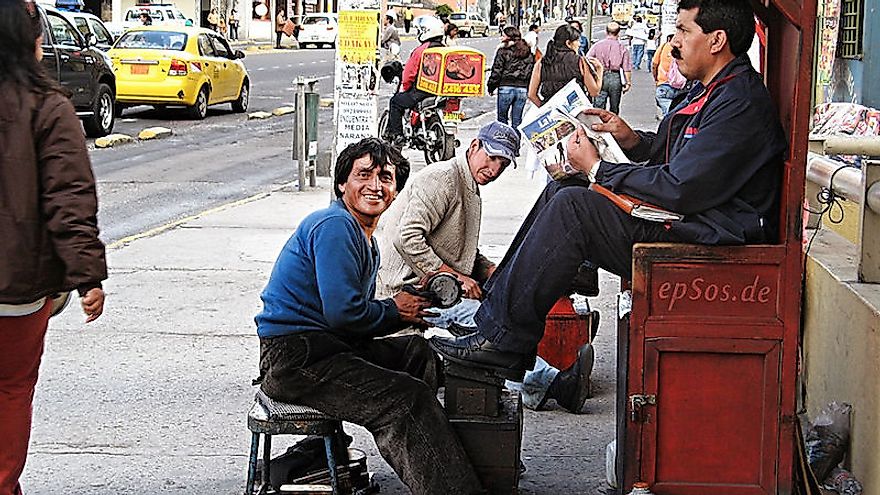14 Countries Where The Bottom 10% Earn Less Than 2% Of All Income

Income Disparity
Income disparity is the difference in household income between the lower and higher ends of the distribution. A wide gap between those who are considered rich and those who live in poverty within a country is indicative of socio-economic inequality. The extent of income disparity changes based on the time in history, the society, and the economic structure of a country. Some nations experience a large gap in income distribution where the bottom 10% of the population earns less than 2% of the total country’s income. These countries are all located in Latin America with the exception of one, the United States.
Income Inequality In Latin America
It is quite evident that Latin America is the region with the greatest disparity in the world. When the richest 10% earn over half of all available income, that does not leave much to distribute among the remaining 90% of the population. In Bolivia, the poorest 10% of the people earn only .9% of all the income in the nation, in Brazil and Honduras it is 1%, and Colombia and Panama are only 1.1%. All of the Latin American countries on this list have experienced great changes in economic policy over the past few decades, but it has done little to reduce the gap. Why?
Latin America is a post-colonial world that developed out of European colonization and exploitation of indigenous communities. Little has changed since then. During the late 1800’s, access to education and ownership of land titles were available only to the upper echelon of the society. This system set them up for personal economic growth and laid the foundation for inequality. Indeed, the rich-poor gap continues along lines of ethnicity with those of European descent having far more economic privilege than those of indigenous descent. Deeply embedded structural violence works against those individuals who are trying to claw their way out of poverty.
This effect is seen in Costa Rica where only 1.4% of the national income is distributed among the poorest 10%, Paraguay and Peru with 1.5%, Ecuador and Argentina with 1.6%, Chile (1.7%), and Uruguay and the Dominican Republic (1.9%).
Income Inequality In The United States
Income inequality in the US is the same as that found in Chile, 1.7% of the nation’s income is divided among the bottom 10%. The US is the only developed country on this list. The number of rich people are growing, the number of poor people is growing, and the middle class is decreasing. Today, middle-income families earn practically what they earned during the 1970’s.
The history of this country is similar to that of its neighbors to the south. The land was taken over by colonists who exploited indigenous populations and promoted slavery to make profits. This history has resulted in the current reality, a country where women earn less than men and non-whites earn less than whites. The income disparity was not always so pronounced (though it has always existed); right after World War II, the incomes were fairer that at any other time in history. This fact was due in large part to an economic structure that included a large workforce, social policies (like social security and minimum wage), infrastructure construction, access to education, and housing projects. Since then, that economic structure has declined. Some economists suggest it has been because of globalization and increasingly competitive marketplaces.
Consequences Of Income Inequality
Too much disparity within the population can have some seriously negative consequences. These countries typically have large numbers of social and health problems, little access to education, and obstructed economic growth. Some of the social and health problems include: obesity, mental illness, decreased life expectancy, homicide, incarceration, and drug use. Poor public and social health decreases economic productivity, and increases government spending on healthcare, police, and prisons.
14 Countries Where The Bottom 10% Earn Less Than 2% Of All Income
| Rank | Country | Income Share Held By Bottom 10% of Earners |
|---|---|---|
| 1 | Bolivia | 0.9% |
| 2 | Brazil | 1.0% |
| 3 | Honduras | 1.0% |
| 4 | Colombia | 1.1% |
| 5 | Panama | 1.1% |
| 6 | Costa Rica | 1.4% |
| 7 | Paraguay | 1.5% |
| 8 | Peru | 1.5% |
| 9 | Ecuador | 1.6% |
| 10 | Argentina | 1.6% |
| 11 | United States | 1.7% |
| 12 | Chile | 1.7% |
| 13 | Uruguay | 1.9% |
| 14 | Dominican Republic | 1.9% |







